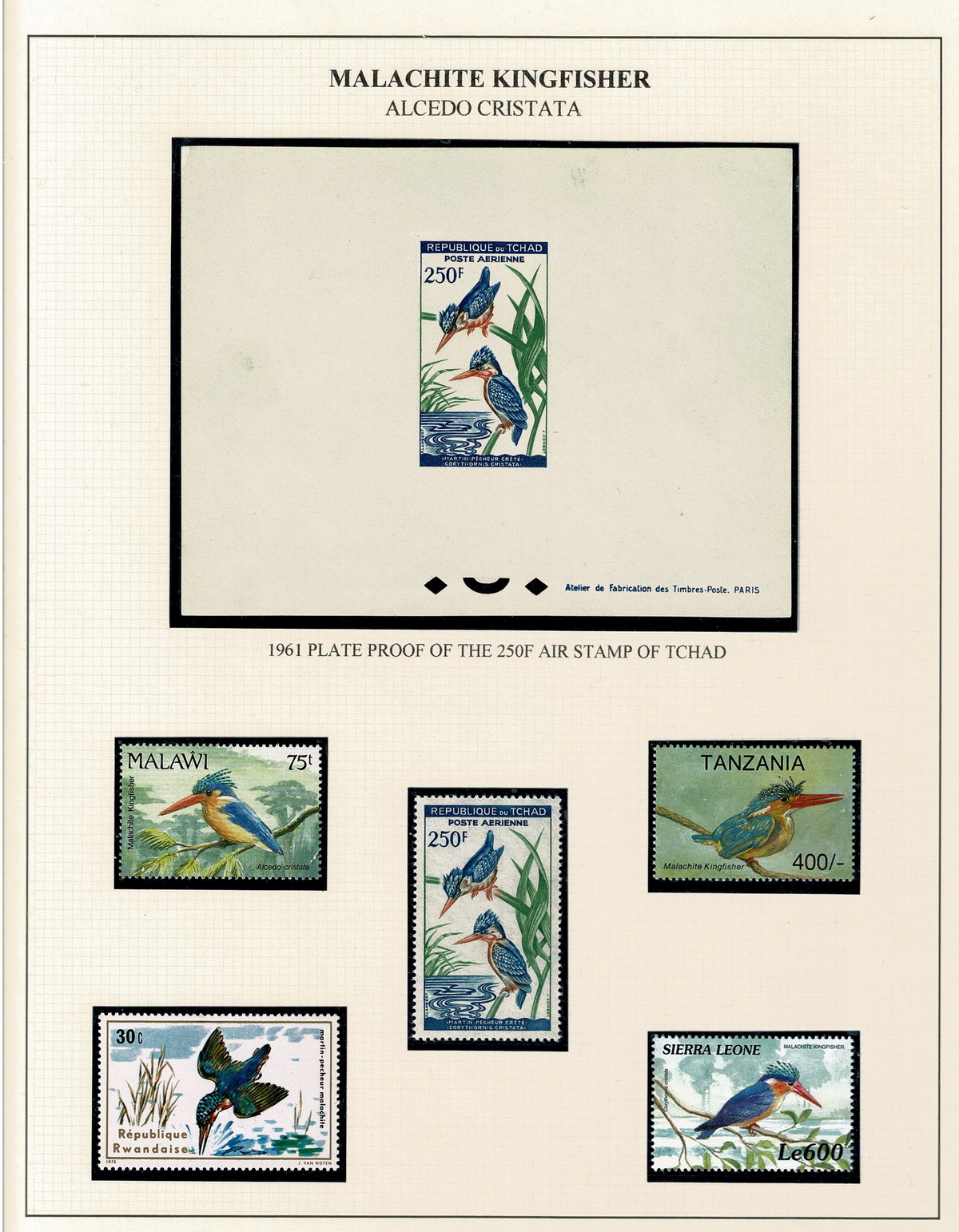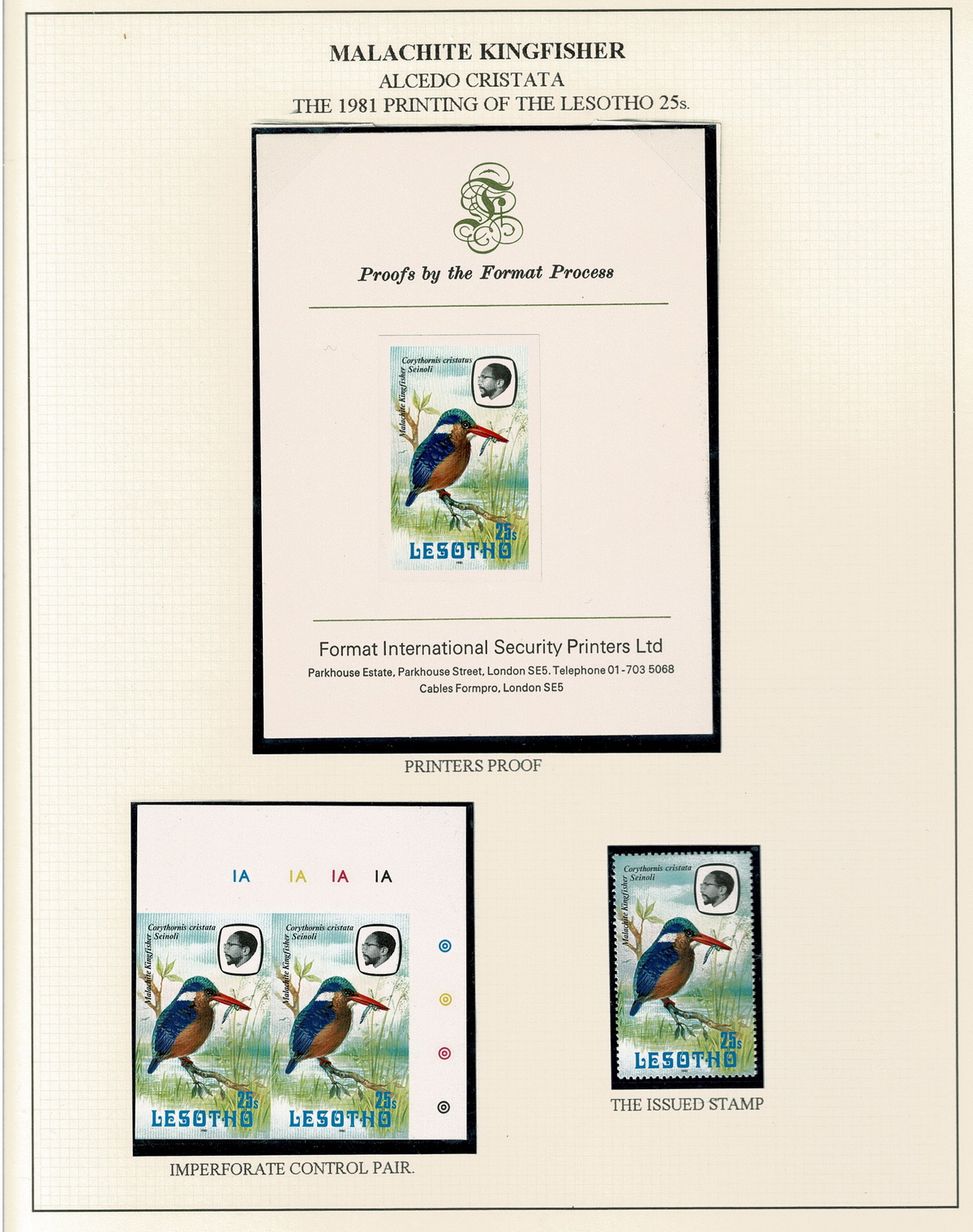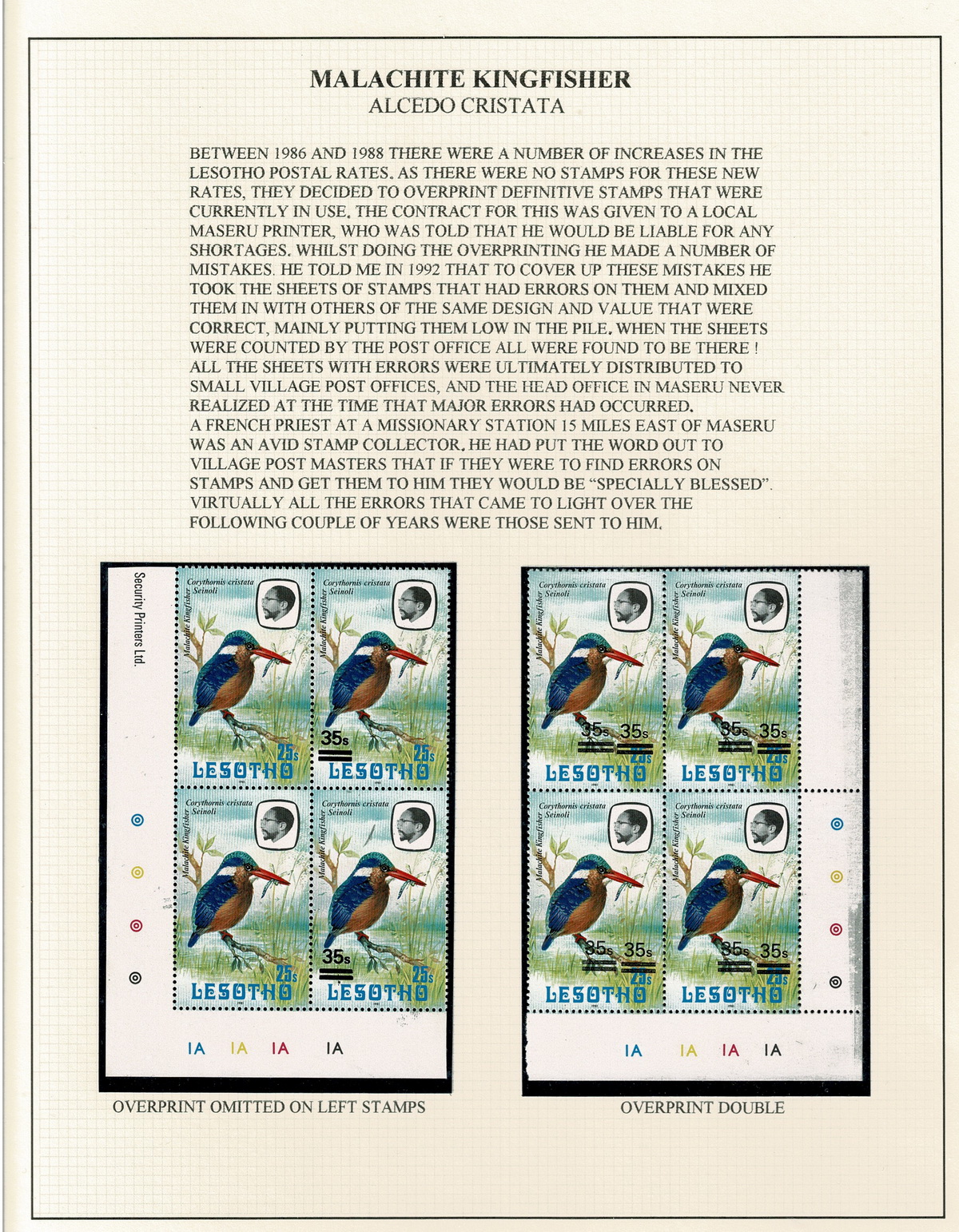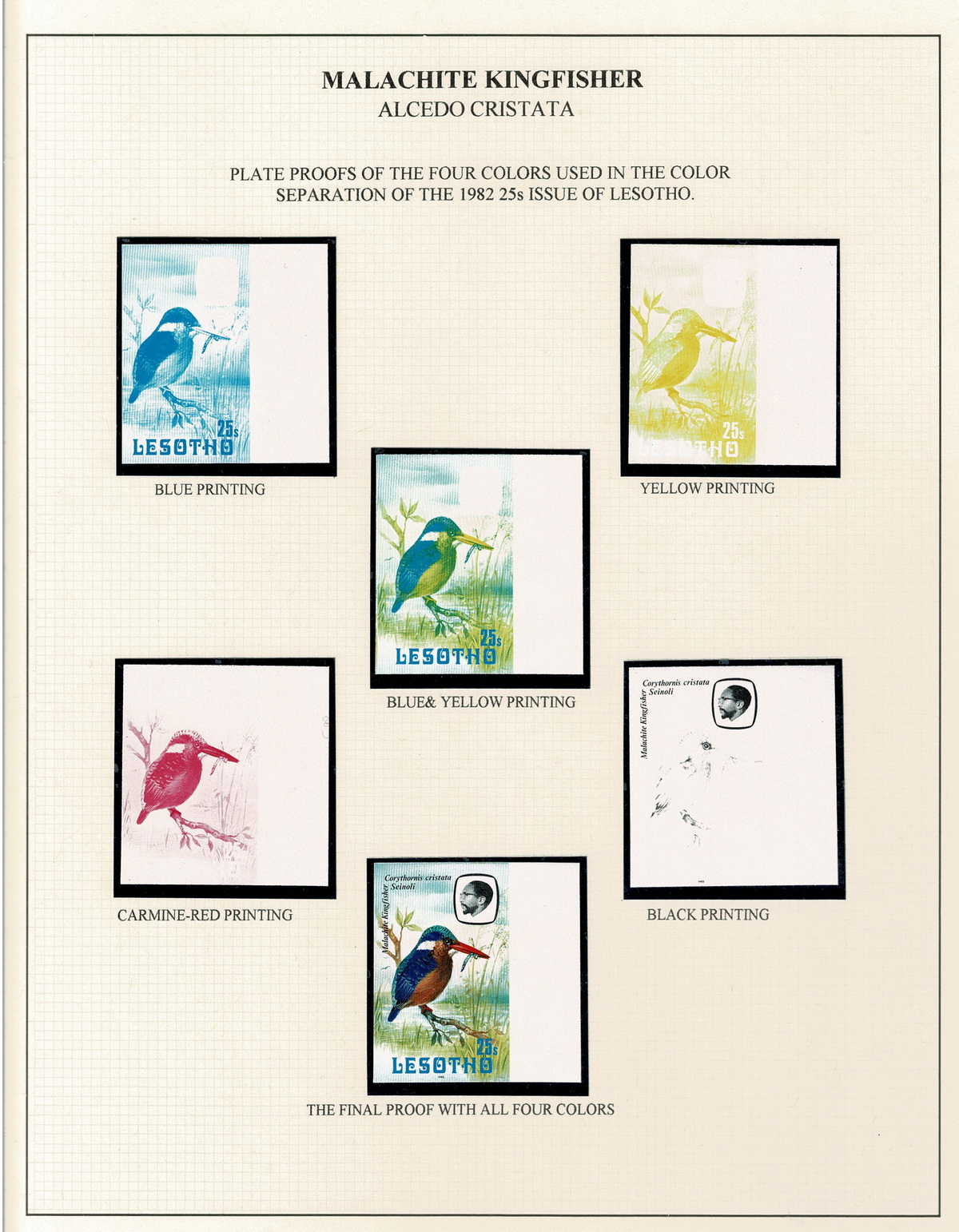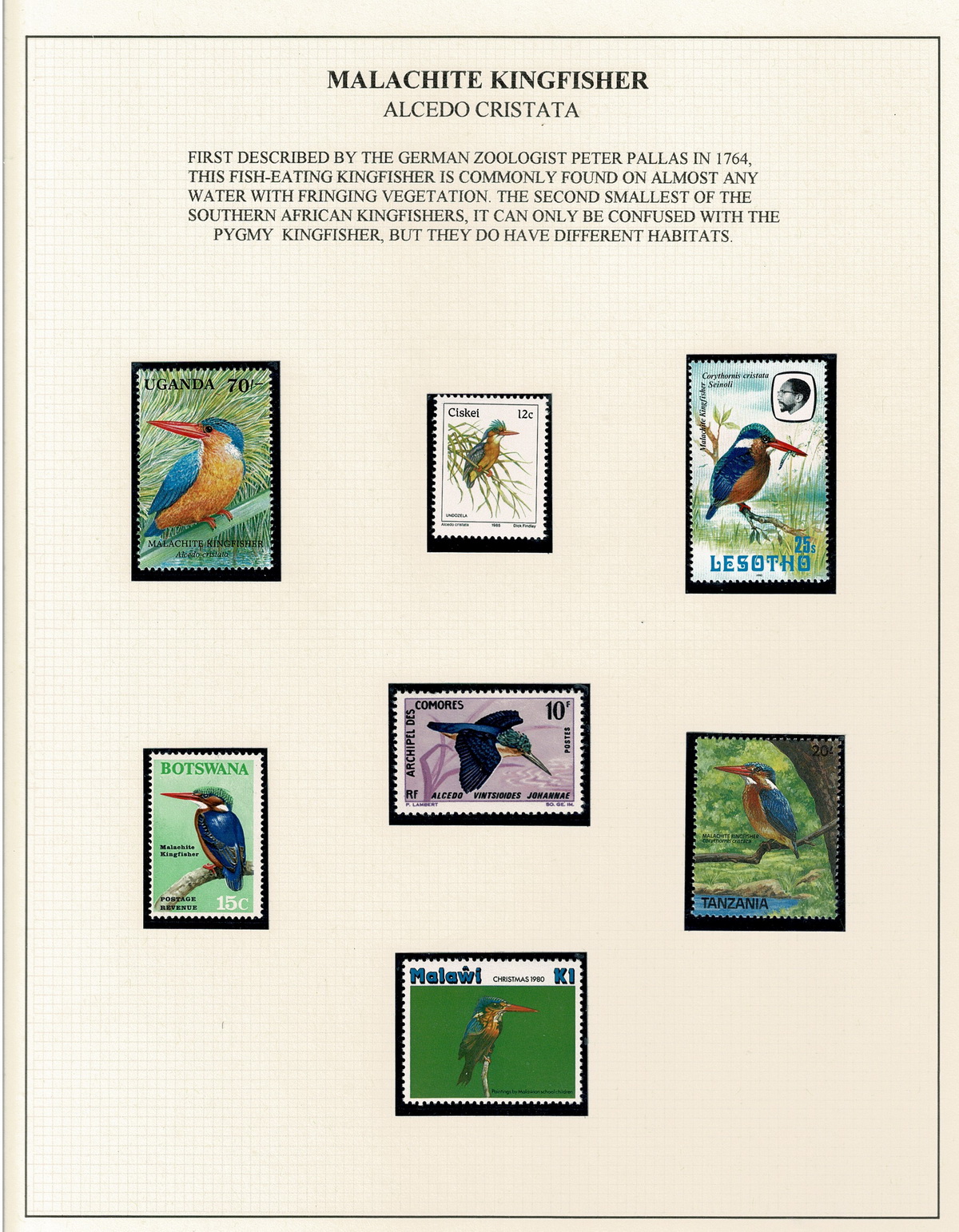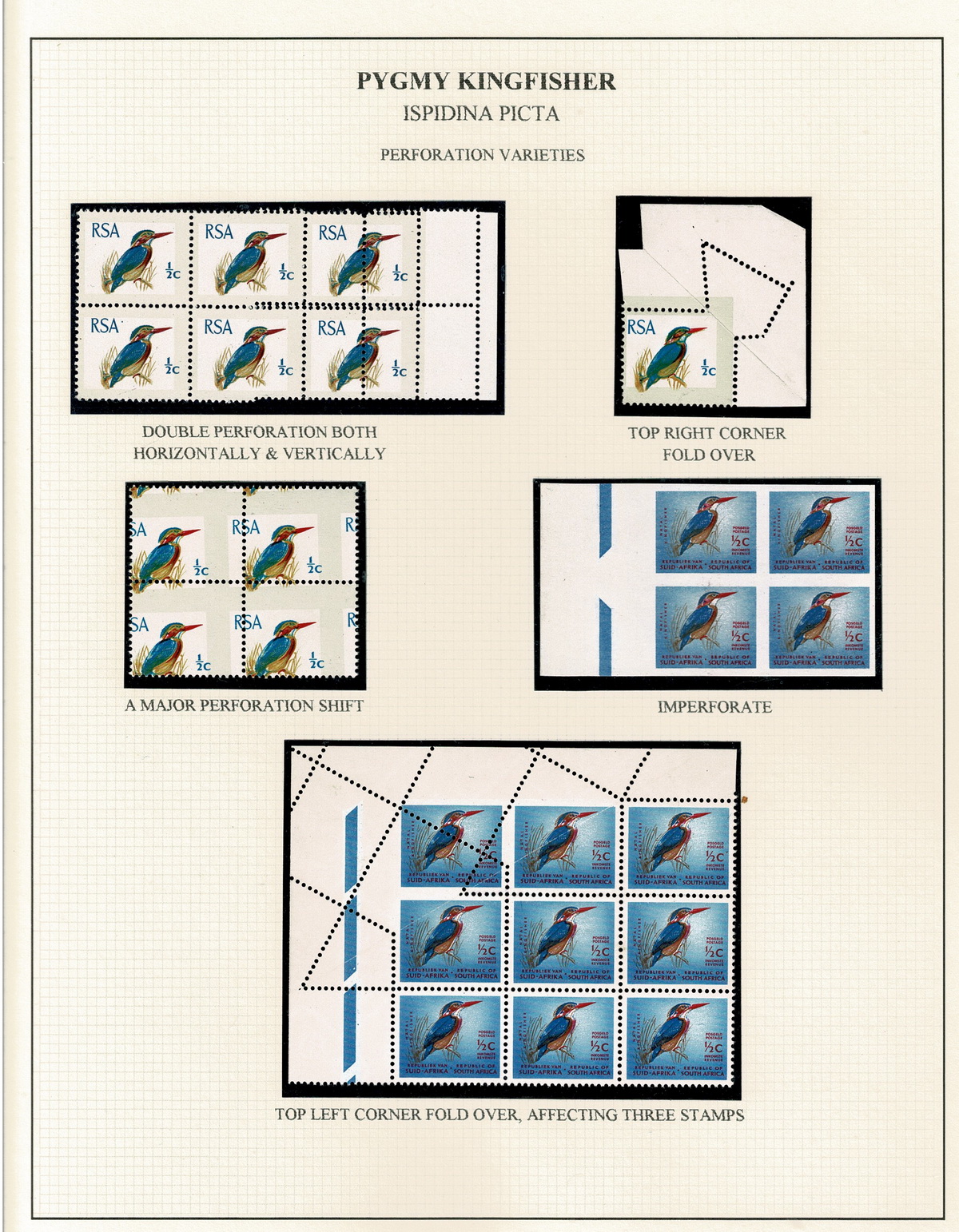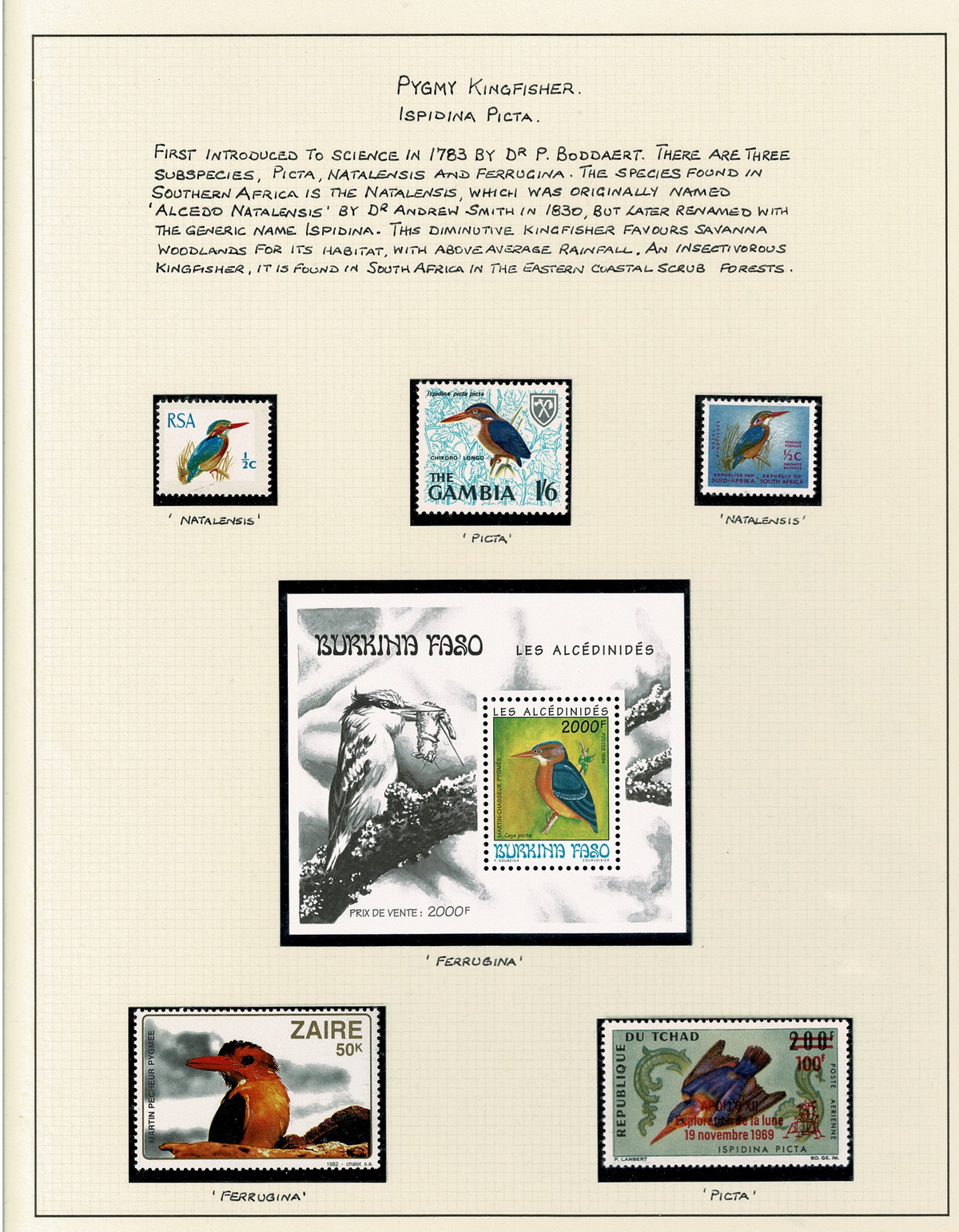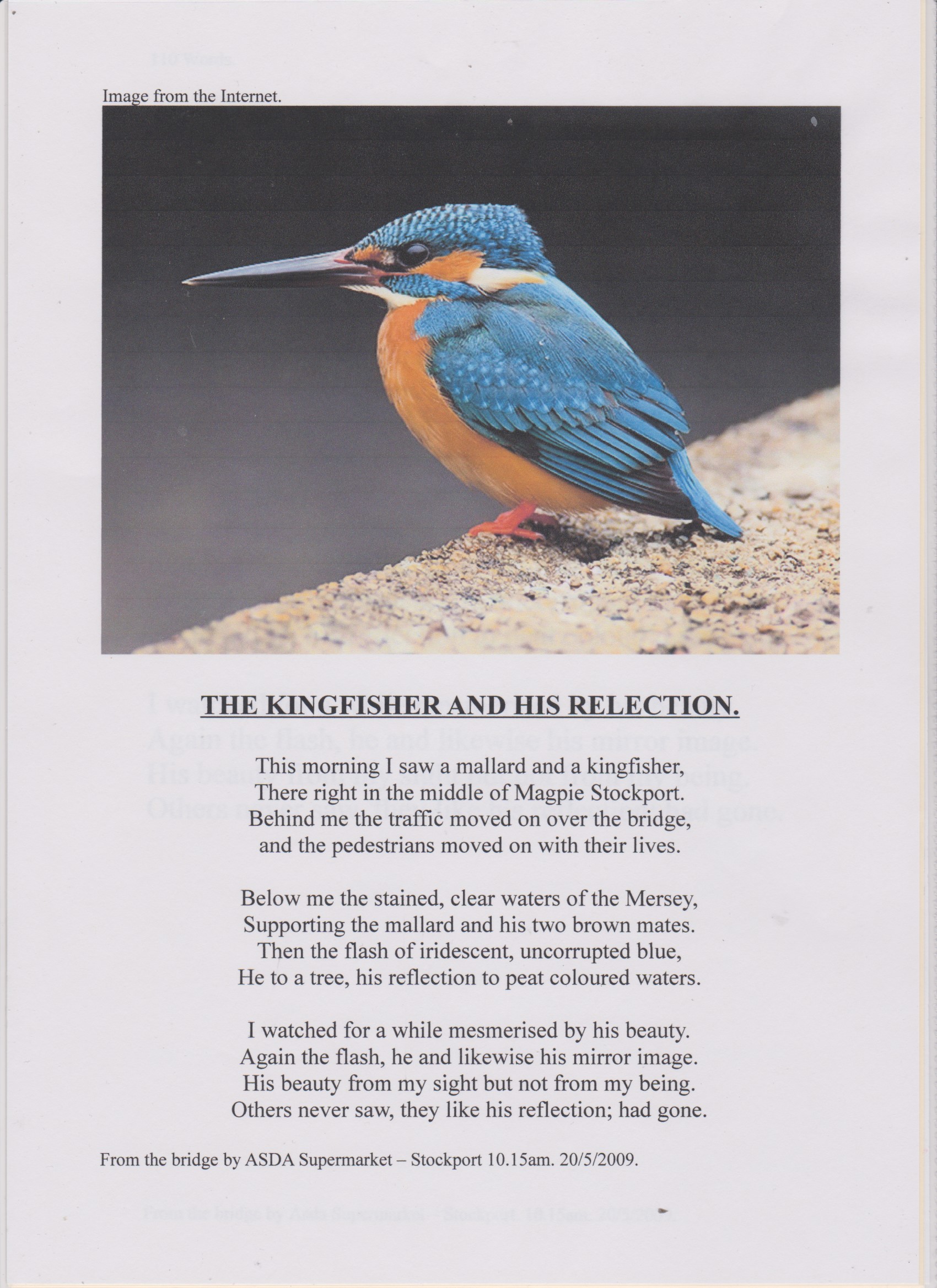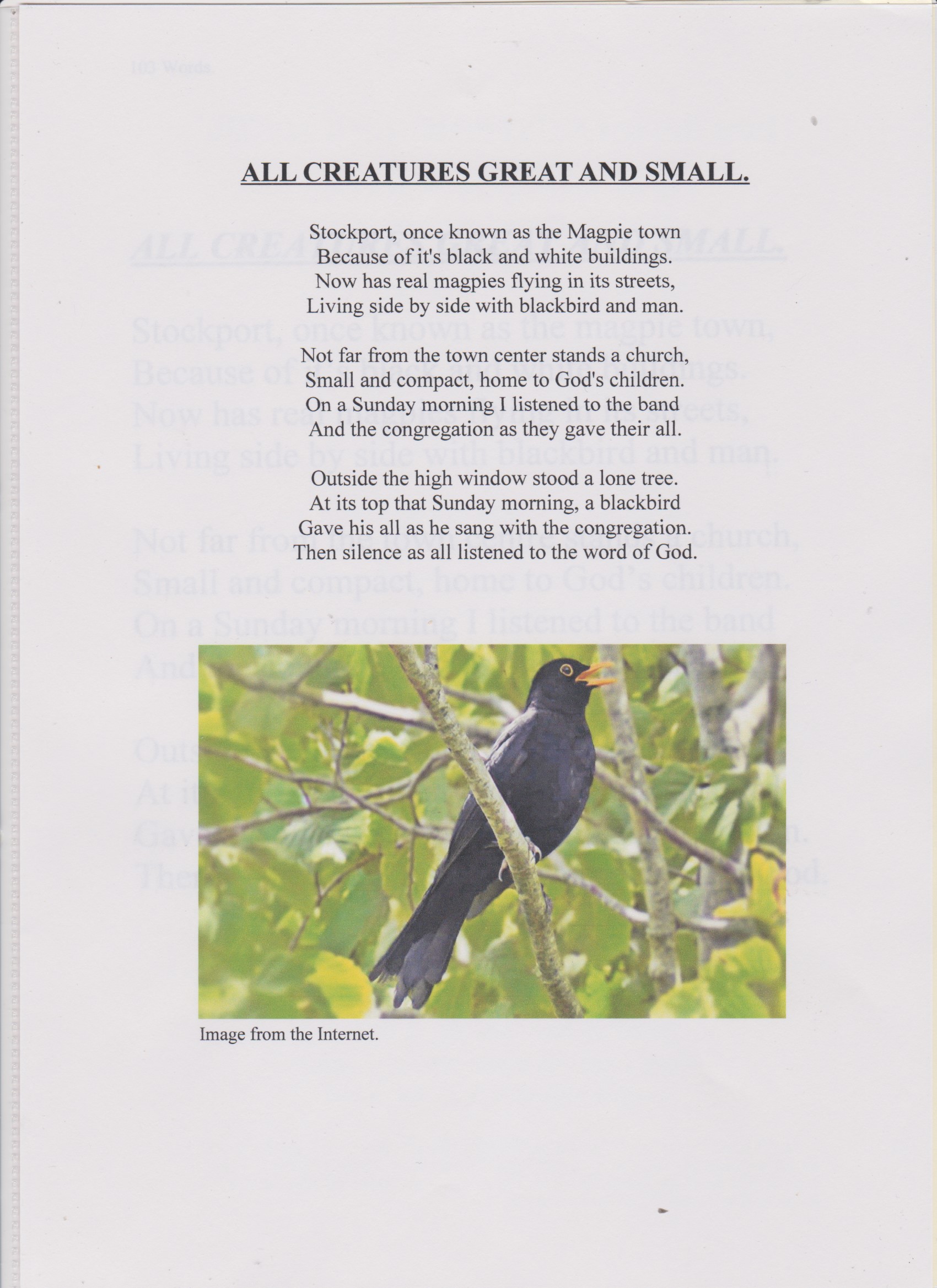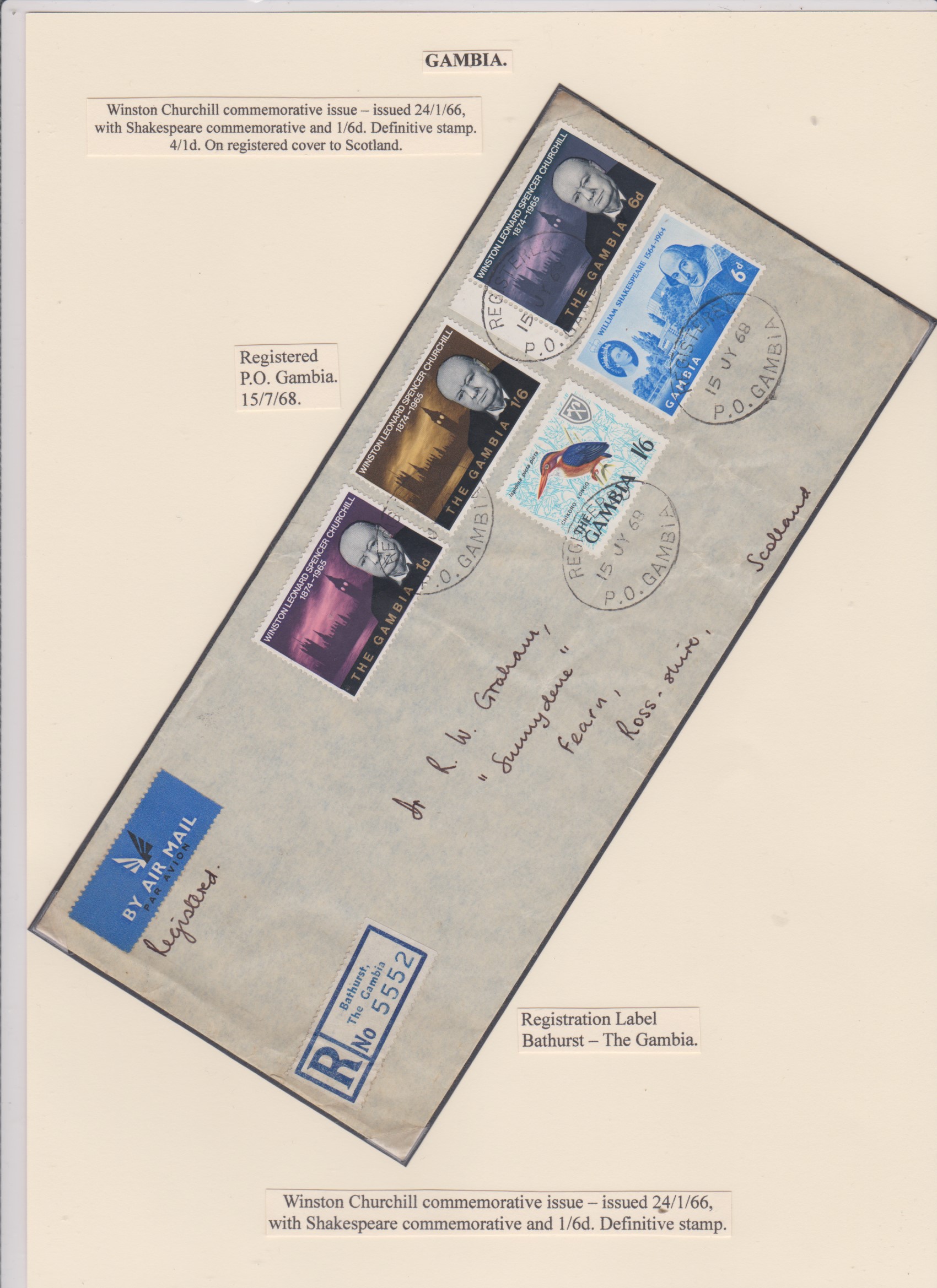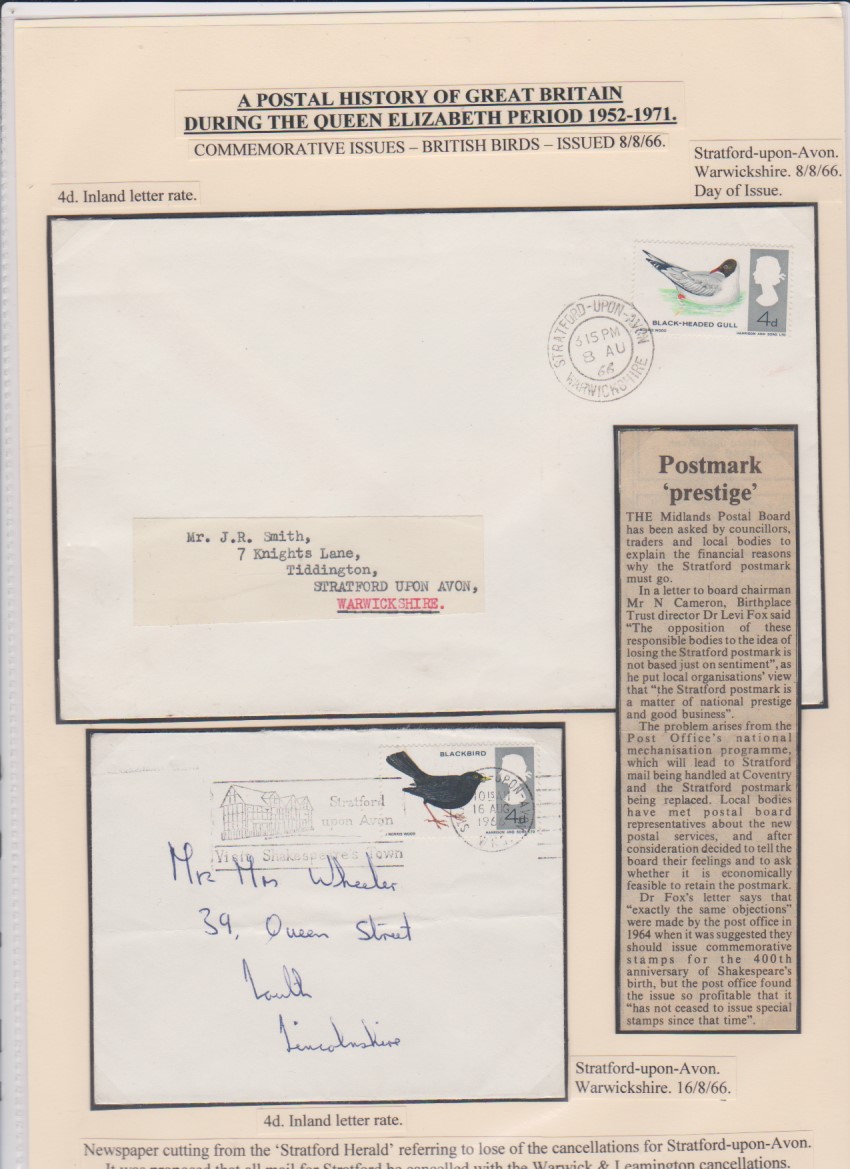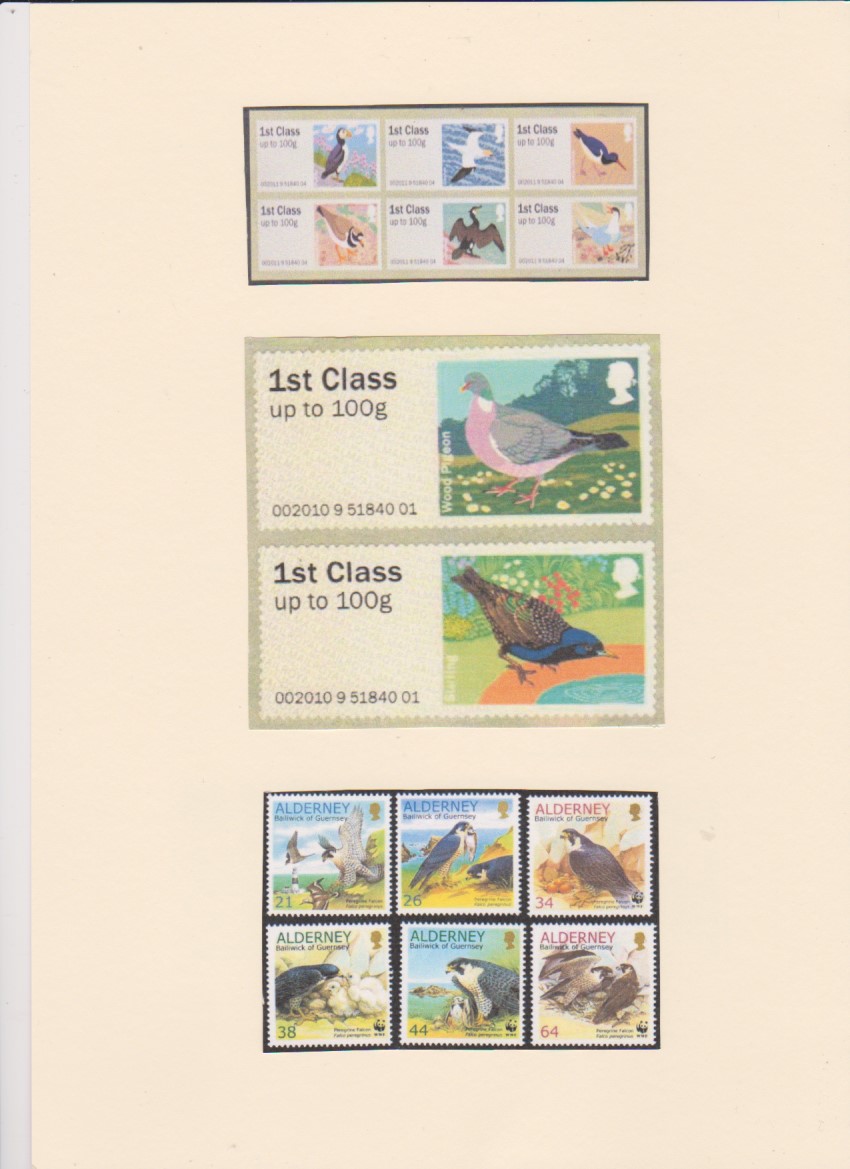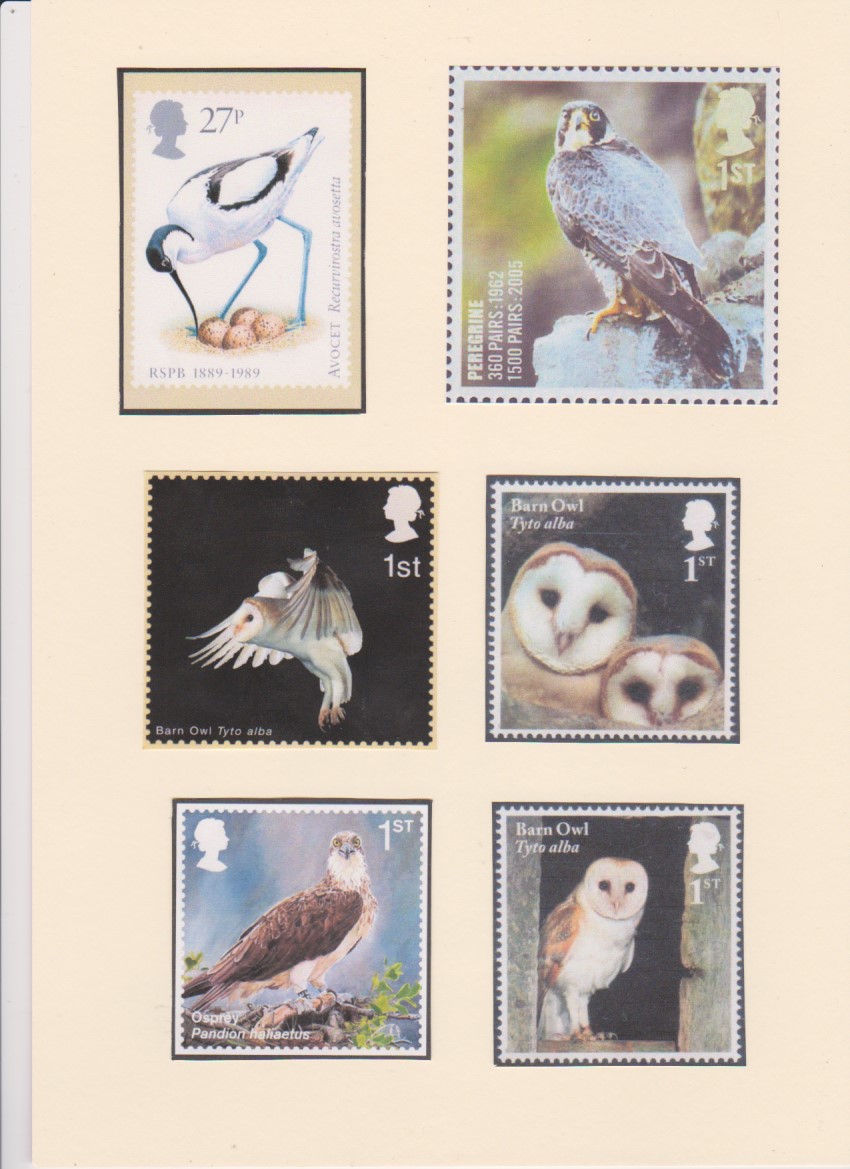Ornithology & Philately
Quote from Jamie Smith on July 31, 2020, 7:47 amStill David's collection
Still David's collection
Uploaded files:Quote from Jamie Smith on July 31, 2020, 7:53 amUnfortunately David's last 4 pages.
These few pages remind me of the many times we spent birding and stamping together. Western Transvaal, Northern Free State and best of all with Glen at Nylstroom!
Unfortunately David's last 4 pages.
These few pages remind me of the many times we spent birding and stamping together. Western Transvaal, Northern Free State and best of all with Glen at Nylstroom!
Uploaded files:Quote from Steve on August 2, 2020, 12:13 pmThis is a superb display, one that leaves me saddened, uncomfortable and disgusted with myself and my family. It reminds me of something awful and bad that I did many years ago as a boy on the farm in Calvinia. I was probably twelve at the time, an Engels mannetjie given right to roam the farm with a pellet gun. One day I saw the most beautiful creature. I took aim and killed a Pygmy Kingfisher. At the time I did not feel so bad about it but over the years the memory of that stupid, senseless act got worse and worse with every passing year. Somethings can haunt you for the rest of your life. They eat you slower than cancer but just as determinedly. I am not writing this to ask you to forgive me. I am writing this to ask forgiveness from myself. The best you can do is hope to forget but where is the lesson in that? So thank you to David and Jamie for reminding me of my sins. On that fateful day my great-uncle, Oom Elias, a Cape Boer rebel who had ridden with Smuts and Maritz and who had killed Black people at the Mission Station at Leliefontein, said to me with tears in his eyes, "how could you do that?" Of course, he never spoke to me of what he had done in the South African War. I do not know how many sacks of salt he carried on his back but I think on that day I picked up one of his sacks and began to carry it.
This is a superb display, one that leaves me saddened, uncomfortable and disgusted with myself and my family. It reminds me of something awful and bad that I did many years ago as a boy on the farm in Calvinia. I was probably twelve at the time, an Engels mannetjie given right to roam the farm with a pellet gun. One day I saw the most beautiful creature. I took aim and killed a Pygmy Kingfisher. At the time I did not feel so bad about it but over the years the memory of that stupid, senseless act got worse and worse with every passing year. Somethings can haunt you for the rest of your life. They eat you slower than cancer but just as determinedly. I am not writing this to ask you to forgive me. I am writing this to ask forgiveness from myself. The best you can do is hope to forget but where is the lesson in that? So thank you to David and Jamie for reminding me of my sins. On that fateful day my great-uncle, Oom Elias, a Cape Boer rebel who had ridden with Smuts and Maritz and who had killed Black people at the Mission Station at Leliefontein, said to me with tears in his eyes, "how could you do that?" Of course, he never spoke to me of what he had done in the South African War. I do not know how many sacks of salt he carried on his back but I think on that day I picked up one of his sacks and began to carry it.
Uploaded files:Quote from Jamie Smith on August 2, 2020, 12:40 pmSteve, You think you have problems. When I was young I roamed the farm with a 12 bore, pheasant, pigeon, fieldfare, redwing, etc. but I never, no never shot a kingfisher, not even a 'small' one!!!!!!!! Out of my crimes grew my love of birds and I wouldn't have missed that for the world. I add a piece I wrote a couple of years ago to keep the 'kingfisher' theme alive (and perhaps to remind you of your sin). Also because I know you prefer to have an 'African' connection I add a second piece.
Steve, You think you have problems. When I was young I roamed the farm with a 12 bore, pheasant, pigeon, fieldfare, redwing, etc. but I never, no never shot a kingfisher, not even a 'small' one!!!!!!!! Out of my crimes grew my love of birds and I wouldn't have missed that for the world. I add a piece I wrote a couple of years ago to keep the 'kingfisher' theme alive (and perhaps to remind you of your sin). Also because I know you prefer to have an 'African' connection I add a second piece.
Uploaded files:Quote from Steve on August 2, 2020, 1:15 pmMy father was a Yorkshireman whose ancestral home was in North Lincs. As his father was not the oldest son he was made to find employment in Hull which is where he married and my Dad grew up. As Dad loved the East Riding of Yorkshire, I grew up in a house in Pinelands, Cape Town, called 'East Riding'. There was a 'North Riding' not far away around a few bends and corners. As a boy, Dad would return to the family farm for his holidays where he was allowed to shoot birds with a small bore shotgun. Dad told me he mostly shot blackbirds. I think he said it was for the pot, an honest motive, but I am not sure. However, the English blackbird is a small songbird so I am wondering if this is what he shot or was it rooks and crows, which are carrion feeders and generally too disgusting to be eaten. I know this is not philatelic but as an expert who can wax lyrical about Parrot Pie I wonder if you have any ideas about shooting and eating 'blackbirds'? "Four and twenty blackbirds baked in a pie" and all that!
My father was a Yorkshireman whose ancestral home was in North Lincs. As his father was not the oldest son he was made to find employment in Hull which is where he married and my Dad grew up. As Dad loved the East Riding of Yorkshire, I grew up in a house in Pinelands, Cape Town, called 'East Riding'. There was a 'North Riding' not far away around a few bends and corners. As a boy, Dad would return to the family farm for his holidays where he was allowed to shoot birds with a small bore shotgun. Dad told me he mostly shot blackbirds. I think he said it was for the pot, an honest motive, but I am not sure. However, the English blackbird is a small songbird so I am wondering if this is what he shot or was it rooks and crows, which are carrion feeders and generally too disgusting to be eaten. I know this is not philatelic but as an expert who can wax lyrical about Parrot Pie I wonder if you have any ideas about shooting and eating 'blackbirds'? "Four and twenty blackbirds baked in a pie" and all that!
Quote from Jamie Smith on August 2, 2020, 1:58 pm'Four and twenty Blackbirds baked in a pie' refers to something historical and political; but when I was young, rooks were shot when they balanced on the edge of the nest (not by me it was more the landed gentry) or took there first steps into the branches but before they could fly. Apparently only the breasts were used, again to make a large pie (as opposed to the small pies we eat today). I have a few pieces about a Blackbird... I am just posting one!
'Four and twenty Blackbirds baked in a pie' refers to something historical and political; but when I was young, rooks were shot when they balanced on the edge of the nest (not by me it was more the landed gentry) or took there first steps into the branches but before they could fly. Apparently only the breasts were used, again to make a large pie (as opposed to the small pies we eat today). I have a few pieces about a Blackbird... I am just posting one!
Uploaded files:Quote from Steve on August 3, 2020, 12:56 pmI am not a religous person, perhaps because of my Methodist upbringing - too much church on Sunday when my friends were going to the mountains or the beach. I know that formal Christian religion makes a distinction between God and Nature. One can find God in Nature but Nature is not God. Whatever. I tend to think that Nature is special, albeit "red in tooth and claw". When we came to live in Cambridge our garden was a mess. No-one had loved it for years. I set about the garden, making it a home for the creatures as much as myself. I told myself that the measure of my success will be the arrival of song thrushes and hedgehogs. "If you build it, they will come!", I told myself. I did build it ... and they came and many was the evening when I communed with Nature and found some sense of something wonderful, God perhaps, in the numinous verdancy of a summer garden filled with the trill of a song thrush and the snuffling of hedgehogs in the undergrowth. But then something dark happened that I could not reverse. Rats from next door were seen attacking blackbird young in the shrubbery. Then foxes arrived. They rolled the hedgehogs over and killed them. Somehow I never found rats killed by foxes. Crows, magpies and jays moved in, killing nesting fledgelings. Now the song thrushes and chattering feisty little sparrows are gone. My beautiful garden has lost its heart and soul. No amount of replanting will restore it to what it was ... unless we can let loose men with shotguns to reset the balance.
I am not a religous person, perhaps because of my Methodist upbringing - too much church on Sunday when my friends were going to the mountains or the beach. I know that formal Christian religion makes a distinction between God and Nature. One can find God in Nature but Nature is not God. Whatever. I tend to think that Nature is special, albeit "red in tooth and claw". When we came to live in Cambridge our garden was a mess. No-one had loved it for years. I set about the garden, making it a home for the creatures as much as myself. I told myself that the measure of my success will be the arrival of song thrushes and hedgehogs. "If you build it, they will come!", I told myself. I did build it ... and they came and many was the evening when I communed with Nature and found some sense of something wonderful, God perhaps, in the numinous verdancy of a summer garden filled with the trill of a song thrush and the snuffling of hedgehogs in the undergrowth. But then something dark happened that I could not reverse. Rats from next door were seen attacking blackbird young in the shrubbery. Then foxes arrived. They rolled the hedgehogs over and killed them. Somehow I never found rats killed by foxes. Crows, magpies and jays moved in, killing nesting fledgelings. Now the song thrushes and chattering feisty little sparrows are gone. My beautiful garden has lost its heart and soul. No amount of replanting will restore it to what it was ... unless we can let loose men with shotguns to reset the balance.
Quote from Jamie Smith on August 5, 2020, 10:07 amSteve and David, continuing our kingfisher theme I throw in a couple of Gambian covers with stamps depicting the Pied and Pigmy Kingfishers. I am a little confused (.Com) as the Southern African Pigmy Kingfisher only has one 'picta' in the Latin name whereas with the West African Pigmy Kingfisher there are two 'picta'. I presume one is a sub-species.
Steve and David, continuing our kingfisher theme I throw in a couple of Gambian covers with stamps depicting the Pied and Pigmy Kingfishers. I am a little confused (.Com) as the Southern African Pigmy Kingfisher only has one 'picta' in the Latin name whereas with the West African Pigmy Kingfisher there are two 'picta'. I presume one is a sub-species.
Uploaded files:Quote from Jamie Smith on August 29, 2020, 10:17 amWATCHING BRITISH BIRDS IN SOUTH AFRICA.
When I started this post it was to introduce the 'Black Headed Gull' on the British cover that I was posting under 'Ornithology and Philately' but as usual after a nights sleep and all the worrying about what our editor Steve might have to say about it because it was a 'British' stamp. “We are South African!” Stiff lower lip and all that! Anyway the emphasis changed and so I made a list of the British birds that I had seen and recorded (I say 'recorded' because at the time I was working as a volunteer on the South African Birding Atlas). This then is the story of some of the British Birds, I have seen or know of in South Africa. I have illustrated the article with images of British stamps taken off E-bay and make no apologies for not naming the stamps, the birds or the various formats – they are just illustrations of stamps you can buy on E-bay if you should wish to start a collection under the above title.
I saw one of the 'at that time' only five Black Headed Gulls ever recorded in South Africa after a school boy had reported seeing the bird at Hartbeesport Dam some time around 1990. I drove out to the dam and there it was standing on the shoreline in exactly the same place that the young man had reported it in three weeks earlier. Now I see about a dozen everyday on the grass outside my house when I feed them here in England but then............. only five recorded in south Africa!
Also on the same page you will see a blackbird. I will say nothing more than there are no blackbirds in South Africa or are there? In the Northern Free State I used to see the 'Black' Crow, and all around our coast I saw the Black Oyster Catcher, I even saw a Black (melanistic) Mourning Dove in the Kruger Park and melanistic Gabar Goshawk in the Northern Free State. And, I nearly forgot the Black Harrier that I saw at Kalkoenkrantz north of Wakkerstroom... (Sorry I forgot 'They are not British!).
I lived in Vereeniging for forty years and I found it was one of the best birding area in South Africa. For five years I put monthly reports in for that area, the record was 156 different species for one month! Among the British birds I saw there were the Bittern, Avocet, Reeves, Green Shank, the Common and Green Sandpipers, Spotted crake (I even saw a Corn Crake but that was in Nylstroom along with a second Bittern). I saw a Black-Tailed Godwit in Iscor's bird reserve. That was one of only two recordings for me.
At the Sharpville sewerage works I saw little grebe and the Yellow Wagtail. The last bird I was sure was breeding as early one morning I saw a pair of what I took to be youngsters lying on their tummies side by side in the grass with their heads thrown back begging for food. I read afterwards that this was also part of the courtship display so they could have been females begging for something else! Either way it does point to breeding!
Of the smaller British birds that I recorded were European Swifts, Swallows and House Martins, they were common. In the reed beds we (I saw we because I used to go out with friends in their boat), we found Moorhens, Sedge Warblers, we even netted a River Warbler. In the trees at the water's edge, Willow Warblers and in the morning we would disturb Barn Owls that were sleeping there. I never saw it but a Blackcap was recorded in the 'Wilds' above Melville in Johannesburg. While I am in Johannesburg let me mention the Grey Wagtail that I did see at Randburg, again only a handful of this bird were ever recorded in South Africa.
Among the stamps I show, you will see the Ring Necked Plover, Arctic Tern, Curlew, Gannet, and what is termed the European Cuckoo in South Africa (this to distinguish it from the African Cuckoo – I saw them all. The birds I didn't see were the Osprey that appeared on a dam near Kroonstad, the Redshank that appeared on the East Rand or the Wood Pigeons that allegedly lived in Walkerville, south of Johannesburg.
Did I mention the Garganey that Dave Morrison and myself drove over five hundred kilometers to see in Pietermaritzburg (we had to be there at daybreak and we still had to drive the same distance home in the afternoon). One sight I want to record which although a British Bird, I never saw or heard of the like in Great Britain. I was driving past a small dam on the way to Randfontein when I saw a bird I didn't recognise swimming like a swan.
When I stopped and checked with the binoculars it was a majestic Grey Heron, even the neck was curved in swan fashion. Talking of swans, the Mute Swan along with the Chaffinch, London Sparrow and common European Starling were all introduced by 'bird lovers?' in the Cape Town area. If you are going to say they don't count I am afraid you are going to have to strike the common, Pheasant, Mute Swan, Golden Pheasant, Lady Amhurst Pheasant along with the Ring Necked Parakeet off the British list as they were all introduced into Great Britain!
I could go on all day, Mallard (released by collectors who had been ordered by the government to kill them because they allegedly raped every South African duck that they could find), Peregrine Falcon, Little Egret, Great White Egret and now that the Lammergeier has been recorded within an hours drive of my home in England I can now add that to the list of British Birds to be seen in South Africa.
`
WATCHING BRITISH BIRDS IN SOUTH AFRICA.
When I started this post it was to introduce the 'Black Headed Gull' on the British cover that I was posting under 'Ornithology and Philately' but as usual after a nights sleep and all the worrying about what our editor Steve might have to say about it because it was a 'British' stamp. “We are South African!” Stiff lower lip and all that! Anyway the emphasis changed and so I made a list of the British birds that I had seen and recorded (I say 'recorded' because at the time I was working as a volunteer on the South African Birding Atlas). This then is the story of some of the British Birds, I have seen or know of in South Africa. I have illustrated the article with images of British stamps taken off E-bay and make no apologies for not naming the stamps, the birds or the various formats – they are just illustrations of stamps you can buy on E-bay if you should wish to start a collection under the above title.
I saw one of the 'at that time' only five Black Headed Gulls ever recorded in South Africa after a school boy had reported seeing the bird at Hartbeesport Dam some time around 1990. I drove out to the dam and there it was standing on the shoreline in exactly the same place that the young man had reported it in three weeks earlier. Now I see about a dozen everyday on the grass outside my house when I feed them here in England but then............. only five recorded in south Africa!
Also on the same page you will see a blackbird. I will say nothing more than there are no blackbirds in South Africa or are there? In the Northern Free State I used to see the 'Black' Crow, and all around our coast I saw the Black Oyster Catcher, I even saw a Black (melanistic) Mourning Dove in the Kruger Park and melanistic Gabar Goshawk in the Northern Free State. And, I nearly forgot the Black Harrier that I saw at Kalkoenkrantz north of Wakkerstroom... (Sorry I forgot 'They are not British!).
I lived in Vereeniging for forty years and I found it was one of the best birding area in South Africa. For five years I put monthly reports in for that area, the record was 156 different species for one month! Among the British birds I saw there were the Bittern, Avocet, Reeves, Green Shank, the Common and Green Sandpipers, Spotted crake (I even saw a Corn Crake but that was in Nylstroom along with a second Bittern). I saw a Black-Tailed Godwit in Iscor's bird reserve. That was one of only two recordings for me.
At the Sharpville sewerage works I saw little grebe and the Yellow Wagtail. The last bird I was sure was breeding as early one morning I saw a pair of what I took to be youngsters lying on their tummies side by side in the grass with their heads thrown back begging for food. I read afterwards that this was also part of the courtship display so they could have been females begging for something else! Either way it does point to breeding!
Of the smaller British birds that I recorded were European Swifts, Swallows and House Martins, they were common. In the reed beds we (I saw we because I used to go out with friends in their boat), we found Moorhens, Sedge Warblers, we even netted a River Warbler. In the trees at the water's edge, Willow Warblers and in the morning we would disturb Barn Owls that were sleeping there. I never saw it but a Blackcap was recorded in the 'Wilds' above Melville in Johannesburg. While I am in Johannesburg let me mention the Grey Wagtail that I did see at Randburg, again only a handful of this bird were ever recorded in South Africa.
Among the stamps I show, you will see the Ring Necked Plover, Arctic Tern, Curlew, Gannet, and what is termed the European Cuckoo in South Africa (this to distinguish it from the African Cuckoo – I saw them all. The birds I didn't see were the Osprey that appeared on a dam near Kroonstad, the Redshank that appeared on the East Rand or the Wood Pigeons that allegedly lived in Walkerville, south of Johannesburg.
Did I mention the Garganey that Dave Morrison and myself drove over five hundred kilometers to see in Pietermaritzburg (we had to be there at daybreak and we still had to drive the same distance home in the afternoon). One sight I want to record which although a British Bird, I never saw or heard of the like in Great Britain. I was driving past a small dam on the way to Randfontein when I saw a bird I didn't recognise swimming like a swan.
When I stopped and checked with the binoculars it was a majestic Grey Heron, even the neck was curved in swan fashion. Talking of swans, the Mute Swan along with the Chaffinch, London Sparrow and common European Starling were all introduced by 'bird lovers?' in the Cape Town area. If you are going to say they don't count I am afraid you are going to have to strike the common, Pheasant, Mute Swan, Golden Pheasant, Lady Amhurst Pheasant along with the Ring Necked Parakeet off the British list as they were all introduced into Great Britain!
I could go on all day, Mallard (released by collectors who had been ordered by the government to kill them because they allegedly raped every South African duck that they could find), Peregrine Falcon, Little Egret, Great White Egret and now that the Lammergeier has been recorded within an hours drive of my home in England I can now add that to the list of British Birds to be seen in South Africa.
`
Uploaded files:
